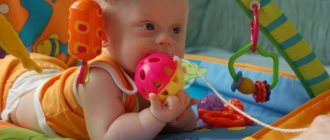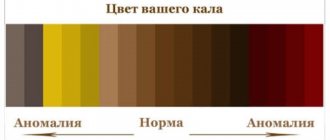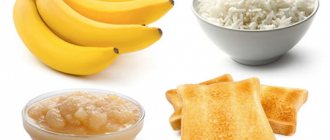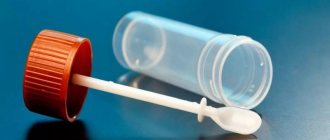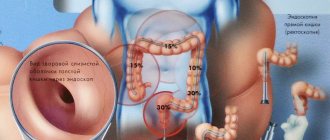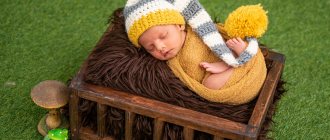The child's body has its own characteristics of functioning. The gastrointestinal tract is no exception. In children, it is still immature, and the secretory function of the digestive glands is low. The color of stool depends on many factors, including the food you eat. Since the main food of infants is milk, it is not surprising that the color of stool and the frequency of bowel movements differs from adults. What to do if a child has yellow diarrhea? What kind of feces is normal for infants?
Normal stool in a baby
Diarrhea is an increase in the frequency of bowel movements. The intestinal motor function of a one-month-old baby is quite energetic, which is manifested by frequent bowel movements: in the first two weeks in a newborn - 3-5 times, during the first year of life - 1-3 times a day, in a one-year-old child - 1-2 times a day. In infants, the process of defecation is a spontaneous (reflex) act, and starting from two years of age, bowel movements are a voluntary (conscious) process.
The child's first bowel movement occurs during the first day of life and is called meconium (original feces). It consists of epithelial cells, bile, enzymes and has a greenish-black color. The manifestation of meconium is necessarily recorded in the developmental history of the newborn, as this indicates intestinal patency. The stool of a breastfed baby is yellow in color and has the consistency of liquid sour cream with a sour odor.
Since artificial formulas for feeding are absorbed in the gastrointestinal tract longer than breast milk, the baby can defecate 2 times less often. At the same time, the volume of feces will be greater. The stool of a formula-fed baby is light yellow in color with an unpleasant odor. If the feeding formula is poorly absorbed in the digestive tract, white lumps may appear in the stool.
A child's normal stool ranges in color from bright yellow to light yellow. The color of stool begins to change and becomes brown only after the introduction of complementary foods at 6 months. In the first year of a child’s life, loose, yellow stools are not a pathology and do not require treatment.
Normal stool color for babies
An infant's stool goes through several stages and is normal at different times. In the first days of life, the baby produces meconium - a dark, slightly viscous mass that is practically odorless. Original feces are formed in the womb and consist of amniotic fluid swallowed by the baby, mucosal cells and other intrauterine formations. Such feces should not frighten young parents; it is natural and does not indicate a violation.
After the mother's milk appears, the baby's stool changes again and transitional feces appear. It consists of the remains of original feces and parts of mature feces formed during the digestion process. Transitional stool is yellow-green in color. A slightly sour odor may occur.
Mature stool, which is established in the first months of life, has a pure yellow color, the consistency of stool should be uniform, without lumps or streaks of blood. This is already formed feces, which normally does not have a strong odor.
When complementary foods are introduced to the baby, the appearance of the stool may change again and acquire a thicker consistency.
The child is born with sterile clean intestines. There are no microflora-forming bacteria in it yet, neither opportunistic nor beneficial. In the first days of a baby’s life, his body undergoes a restructuring of the intestines and colonization with microorganisms. Immediately after the birth of the newborn, it is advisable to attach it to the breast. Mother's milk is an amazing product; its composition is completely suitable for the baby's delicate intestines. The baby receives the necessary dose of antibodies that can fight for health.
Causes of diarrhea
Why does a child have yellow diarrhea? In a young child, loose yellow stools can occur for a number of reasons:
- violation of feeding regime,
- improper introduction of complementary foods,
- changing the diet of a nursing mother,
- intestinal infections,
- diseases of the stomach, pancreas, liver,
- overfeeding the baby,
- intestinal dysbiosis,
- lactase deficiency,
- teething.
In an infant, diarrhea after antibiotics may occur due to the suppression of normal intestinal microflora by antibacterial drugs.
In this case, it is necessary to undergo a stool culture for dysbacteriosis, a stool analysis for opportunistic microflora and coprogram. Based on the test results, the doctor will be able to prescribe adequate treatment. Loose stools in infants often occur during teething. At the same time, the baby begins to salivate profusely and the temperature may even rise slightly.
Frequent, liquid, yellow, foamy stools in a newborn may be a sign of physiological dysbiosis. It occurs during the first two weeks of a child’s life, as the intestines are actively populated by new microflora. At the beginning of the 3rd week in healthy full-term infants after feeding with mother's milk, this condition self-liquidates. Frequent loose stools with white lumps can also be a sign of dysbiosis.
Foamy diarrhea in a child without fever occurs with lactase deficiency, increased gas formation and allergies to foods that the nursing mother eats.
When to see a doctor
It is important to understand that a newborn baby has bowel movements much more often than an adult. It is necessary to monitor the normalization of stool; diarrhea, in the absence of proper treatment, can lead to dehydration of the child’s body. If you experience the following dangerous signs, you should consult a doctor:
- diarrhea;
- temperature;
- lack of appetite;
- vomit;
- The child passes thin, foul-smelling feces.
If at least one of the above factors occurs, parents should immediately contact a specialist. In the first month of life, loose stools accompanied by water are dangerous for the baby.
Restoring the microflora will require a complete revision of the diet of a nursing mother. The lactose that the baby eats is able to absorb enzymes from the food that the baby’s mother eats. Depending on how much fluid the child has lost, he is given rehydration agents to replenish his water balance. They can be administered by intravenous injection or orally.
When to see a doctor?
In the first months of life, it is quite difficult for parents to determine whether a child has diarrhea, since bowel movements occur much more often than in adults.
Signs of "danger":
- the number of daily bowel movements exceeds the norm,
- accompanied by an increase in temperature,
- the child refuses to eat,
- diarrhea with foam in a child,
- yellow diarrhea with mucus,
- watery stool
- vomiting, nausea,
- the baby is constantly restless, cries, knocks his legs or is lethargic,
- signs of dehydration: the newborn’s fontanelle is sunken, mucous membranes are dry,
- there is mucus in the stool; after the introduction of complementary foods, there may be pieces of undigested food.
If at least one of the above symptoms appears, you should immediately consult a pediatrician to determine the causes of diarrhea in children.
In a newborn, loose stool “water” always leads to dehydration and is a very dangerous condition. What to do in this case?
Treatment involves adequate replenishment of the body's water balance. Rehydration agents are administered intravenously or orally, depending on the degree of fluid loss. Frequent loose stools with white lumps may indicate severe intestinal dysbiosis. This condition can also occur in children who are bottle-fed, since not all formulas are equally well digested in the child’s gastrointestinal tract.
Treatment of the condition
Before the doctor arrives, first aid must be taken. It consists of the following actions:
- Increase breastfeeding.
- Add a water-salt solution. You can make it by dissolving a teaspoon of salt and 4 tablespoons of sugar in cooled boiled water. The solution must be prepared strictly according to the instructions, and not based on your own taste. A weakly concentrated solution will not give results, and a highly concentrated solution will only aggravate the situation and increase diarrhea and vomiting.
- The volume of fluid is restored based on body weight: 10 ml per kilogram.
Diarrhea is a consequence of a disruption in the functioning of the body; it is prohibited to use means that abruptly interrupt loose stools without identifying the cause.
The main therapeutic measures are aimed at restoring water balance. Electrolytes can restore the mucous membrane and help the intestines absorb fluid. Non-infectious diarrhea can be treated only in such gentle ways. If the causative agent of the infection is known, antibiotics will be required.
Children after six months are allowed to drink a decoction of dried fruits.
Types of diarrhea
Foamy diarrhea in an infant, which has a strong odor and is accompanied by an increase in temperature, as well as symptoms of intoxication, indicates the presence of an intestinal infection. Classification of acute intestinal infections by type of diarrhea:
- Invasive type. Acute intestinal infections of bacterial etiology. They are caused by Salmonella, Shigella, some types of Escherichia, Yersinia and other pathogens. Pathogens can invade the epithelium of the gastrointestinal tract and cause foamy stool. Watery diarrhea with yellow-green mucus mixed with blood in a child often indicates salmonellosis. Green stool and small amounts (“rectal spitting”) indicate the occurrence of shigellosis.
- Secretory type. Such diarrhea in an infant can be of bacterial etiology (Vibrio cholerae, enterotoxigenic Escherichia, Klebsiella, Campylobacter, etc.) or viral (rotaviruses, coronaviruses). These pathogens multiply only on the surface of the intestinal epithelium. This type of diarrhea causes very loose stool in a newborn, looking like “water.” Yellow diarrhea in infants and older is a clear sign of rotavirus infection.
- Mixed type. Caused by a mixed infection, clinical signs include symptoms of both invasive and secretory types.
To isolate the suspected pathogen, feces, vomit, and gastric lavage are used, where it is identified using bacteriological examination.
Its main disadvantage is the long time it takes (5-7 days); sometimes diarrhea in a newborn can be cured even before results are obtained. Serological tests are also used to detect the titer of antibodies to a specific pathogen. Treatment of acute intestinal infections is prescribed by a doctor, since loose stools in an infant can quickly lead to dehydration with serious consequences. Rehydration and detoxification therapy are prescribed, and antibacterial drugs are prescribed for bacterial infections.
Associated symptoms
Diarrhea is accompanied by a general deterioration in the child’s condition. Symptoms appear:
- mucus, yellow;
- foamy diarrhea;
- mucous stool, foam;
- lumps of undigested food;
- feces with water;
- sour odor, yellowish color with granular formations.
These symptoms should not be ignored by parents.
The manifestation of intoxication serves as a dangerous signal. Intestinal infections are classified into types:
- Invasive type. The infection has a bacterial etiology. Salmonella and Shigella infect the epithelium, diarrhea foams and becomes watery.
- Secretory type. The cause is bacterial, the pathogens are on the surface of the intestinal mucosa. The secretory type is characterized by liquid white stools that resemble water.
- Mixed type. The clinical picture combines generalized symptoms of the above types.
To determine which pathogen is causing the diarrhea, vomit or feces are sent for laboratory testing. Identification may take a long time; a trip to the pediatrician is required.
Prevention of yellow diarrhea
In a newborn, diarrhea is easier to prevent than to treat. To this end, you must adhere to the following rules:
- a nursing mother should be on a hypoallergenic diet,
- follow the rules for introducing complementary foods (at 6 months - vegetable puree, at 8-9 months - low-fat pureed
- meat, at 10-12 months. - steamed fish cutlets),
- keep baby care products clean,
- observe food expiration dates,
- carefully thermally process food products,
- Avoid feeding your baby cow's milk.
Liquid yellow stool in a newborn is normal. If diarrhea occurs or foamy, watery or greenish stool appears, you should contact your pediatrician.

